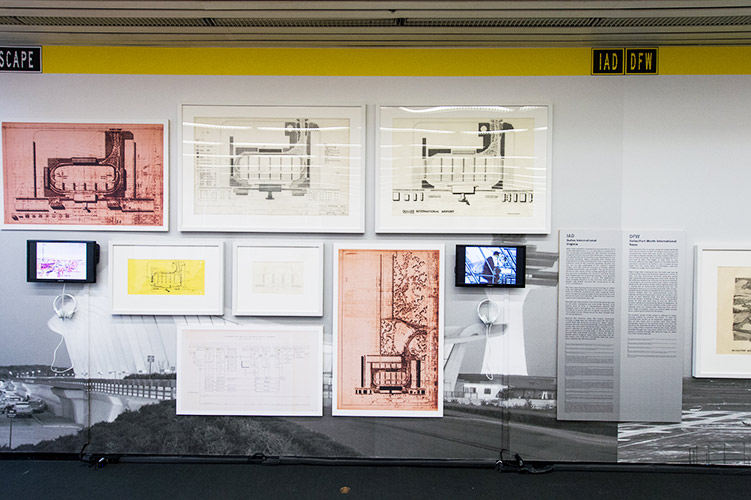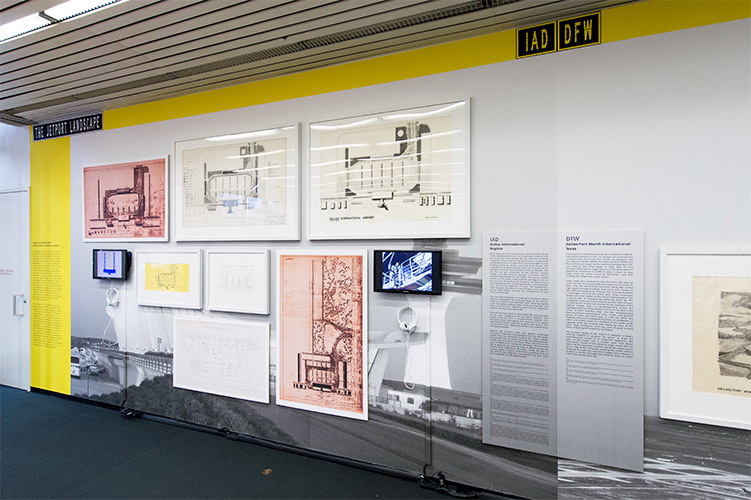Airport Landscape: The Jetport Landscape
October 30, 2013–December 19, 2013
Sonja Dümpelmann, curator
In the 1950s and 1960s, landscape architect Daniel Urban Kiley (1912–2004) was commissioned to provide landscape designs for two of the first jetports built in the United States, Dulles International Airport (IAD), 30 miles outside of Washington, D.C., and Dallas/Fort Worth International Airport (DFW) in Texas. These airports were planned to accommodate commercial aviation with jet aircraft between continents, and they were the first airports served by the supersonic passenger jet Concorde in the 1970s. Kiley’s designs mark a shift in the genealogy of the airport landscape. Initially understood as manufactured grounds and in some cases as parks, airports had now become a comprehensive landscape and an environment that was to be safeguarded. Many parts of the designs for IAD were realized, and Kiley was again consulted on expansion plans in the late 1980s, but his designs for DFW have largely remained a future vision.
Fascinated by French seventeenth-century gardens, Kiley was an ideal candidate to offer designs for the new jetport landscape. Already in the early twentieth century, the expanse and openness of the early airfields and the infrastructure needed for powered flight had inspired many commentators and designers to draw parallels between them and the gardens of Versailles. For IAD and DWF, Kiley developed designs that accommodated the monumental scale of the airport buildings and infrastructure. He provided massed plantings both as counterweights and as elements that further emphasized the vast scale. Plantings and water features were parts of his designs that celebrated the airport landscape and embedded the terminal buildings, access roads, and parking lots into the larger landscape.

